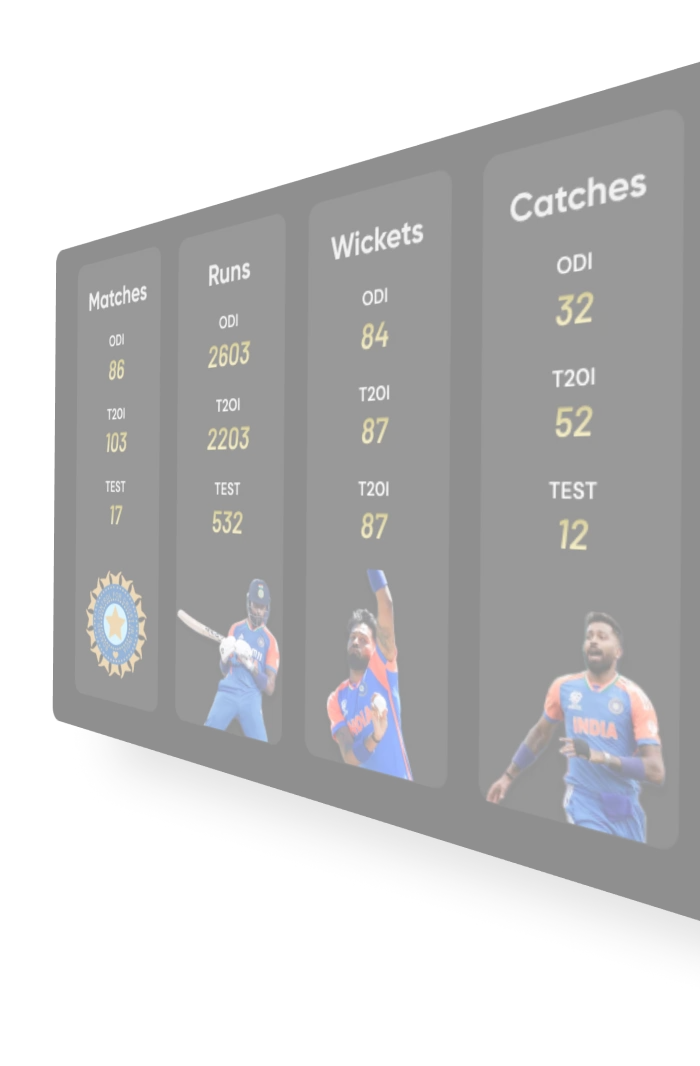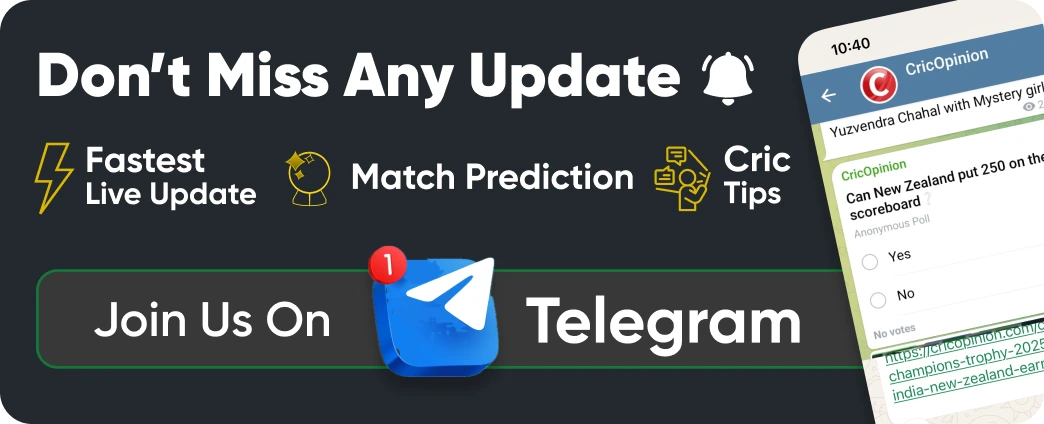
Table Of Contents
DRS in cricket is a review system that uses technology and allows players and captains to challenge a decision made by the on-field umpires. If a batter believes they are wrongly given out or the fielding team feels that they have dismissed the batter but the umpire has shaken their head, they can opt for a DRS.
The idea behind the introduction of such a system was that the accuracy in decision-making could increase by multiple times. The DRS allows the introduction of hi-tech cameras that can produce concrete evidence to often overturn decisions made by the on-field umpire. In a game like cricket, even a single wrong decision can change the outcome of the match on its own. Therefore, player referrals have been a revolution in the last decade and a half.
For instance, in LBWs, there are multiple factors that need to be taken into account before making a decision. But an on-field umpire often has a mere few seconds to make their decision. So the non-striker, wicketkeeper, or fielder who is often in a better position can help in going for a referral.
Accepting a system like DRS in cricket which impacts the game so massively was not easy for teams and players. For example, the Indian team showed signs of reluctance. The DRS with its margin of uncertainty can often not predict the trajectory of the ball after the impact with the pad. The Indian team felt that this reason was enough to avoid using DRS.

15 Laws of Cricket (Basic Rules): Explained with Images

Cricket Umpire Signals - Unique Hand Active and Meanings

Why Cricketers Wear White Jerseys in Test? History and Reason Explained
The full form of DRS is the Decision Review System. As the name suggests it gives players from both the batting team and the bowling team to challenge a decision made by the on-field umpire. There is a limited number of DRS a team can opt for in an innings. For tests, each team has three DRS per innings while in ODIs and T20Is there is two DRS per innings for each team.
If a team takes a successful DRS then they do not lose the review. For a long while only if the DRS was able to overturn the on-field umpire’s decision it would be termed successful. However, even if there is an umpire’s call the team does not lose the review.
DRS in cricket works to improve the overall performance and accuracy of decision-making. The players opting for a DRS need to do so within a stipulated time period. There is a DRS timer of 15 seconds in cricket and the batter or the skipper needs to signal before the timer runs out. While many believe that DRS can fully replace on-field that is not the case. The use of technology can only be done with the involvement of the on-field umpires.
Particularly in the case of LBWs where calculating the trajectory of the ball after the impact is not accurate, the decision made by the on-field umpire plays a huge role. Even with decisions where the is a doubt about whether the ball hit the bat first or the pad, the on-field umpire plays an important role. In such cases where even the technology can not provide substantial evidence overturning the call made on the field is not possible.


There are a few components of the DRS system in cricket. These components are the technology that helps the third umpire in making a decision. Apart from the state-of-the-art technology cameras and other high-tech equipment, there are a few devices that are necessary to use DRS in cricket. Here is a look at the important components of the Decision Review System.
UltraEdge/Snickometer is commonly referred to as ‘Snicko’. As the name suggests it is a type of technology that is used to whether the ball made contact with the edge of the bat. There are plenty of cases where a faint edge is not heard by the umpire which can impact their decision making. In the case of LBWs, even the smallest of edges can save the batter from being dismissed.
The snicko is used with an ultra-slow-motion replay and often the third umpire asks the operator to move frame by frame. If the ball is passing the edge of the bat at the same time when the bat and pad are close to each other every frame is played to help the third umpire to reach the decision.
However, one of the biggest drawbacks of the snicko is that even with the best cameras it leaves the third umpire to make the call whether the bat edged the ball or made contact with the pad. There have been plenty of times where in spite of using a snicko, the umpires have made controversial decisions. One of the most recent examples came in the first test of the Border-Gavaskar Trophy when KL Rahul was given out in the first innings at Perth.
The Hawk-Eye ball tracking is possibly the most important part of DRS in cricket. Even without snicko, the umpires can somewhat make a decision by looking out for a deviation when the ball goes past the bat. However, the Hawk-Eye ball tracking technology has overturned some of the howler decisions made by the umpire. As the name suggests ball tracking is used to track the path of the ball after pitching and impact.
For a batter to be dismissed via LBW the first thing that needs to be checked is whether the ball has hit the bat. If there is no contact between the batt and the ball then the umpire moves to ball tracking using the Hawk-Eye technology.
To dismiss a batter via LBW the ball needs to pitch either on the line of stumps or the off-side of the batter. A ball pitching outside the leg stump can not dismiss the batter via LBW. After pitching the next point of contention is where the ball has made an impact with the pad. The impact needs to be within the line in most cases. However, if the batter has not played any shot then the impact does not affect an LBW decision. Once impact and pitching are checked the hawk-eye moves to the final step which is whether the ball is hitting the wicket or not.
Hot Spot technology plays a supporting role to the Snickometer in order to check whether the ball touched the bat or not. The hot spot technology is only used in Australia and can be used only with the help of two infrared cameras. These infrared cameras keep on recording the whole time and when needed can be used to help in making decisions.
The hot spot technology as the name indicates leaves a spot where the ball made contact with the bat. The pictures in these cameras are black and the point of contact is shown by a bright white spot. It can also help the umpires in LBW decisions where they are facing trouble in deciding whether the ball touched the bat or the pad first.
There are no major rules when it comes to using DRS in cricket. The players or the captain opting for a DRS needs to make sure whether they have a chance to overturn the decision made by the umpire. In case they wish to opt for a DRS the batter or the captain should make sure they do it within 15 seconds.
When taking a DRS for an LBW appeal it is important to understand why the umpire might have given the not-out signal. It is crucial to know whether there is an edge involved or if the ball is missing the stumps. Among all these factors there is an umpire’s call. The umpire’s call basically means to overturn the decision made by the on-field there should be some concrete evidence.
DRS in cricket is hugely impacted by the umpire’s call. So what is an umpire’s call? The decision made by the umpire is made in a few seconds on the basis of what the delivery looks like at first glance. With the slight drawbacks of technology, the exact trajectory of the ball cannot be predicted.
Once the ball has made contact with the pad the trajectory of the delivery cannot be accurately calculated. Therefore, the umpire’s call is in place to take into account the margin of error that the technology carries with itself. In cases where the ball is partially (less than 50%) hitting the wickets, hitting the pad, or pitching in line the umpire’s call comes into effect. So what happens when the ball has made partial contact? In these cases, due to the lack of concrete evidence, the third umpire stays with the decision made by the on-field call. The team or the batter taking the DRS in such does not lose the review.
DRS in cricket is limited and therefore is an important decision. The number of player referrals allowed differs on the basis of formats. In test cricket, each team has three DRS per innings while in ODIs and T20Is, there are two DRS per innings. However, if a team or a batter takes a successful review then they do not lose the DRS. If DRS are left from the first innings they do not carry forward to the next innings.






More Links